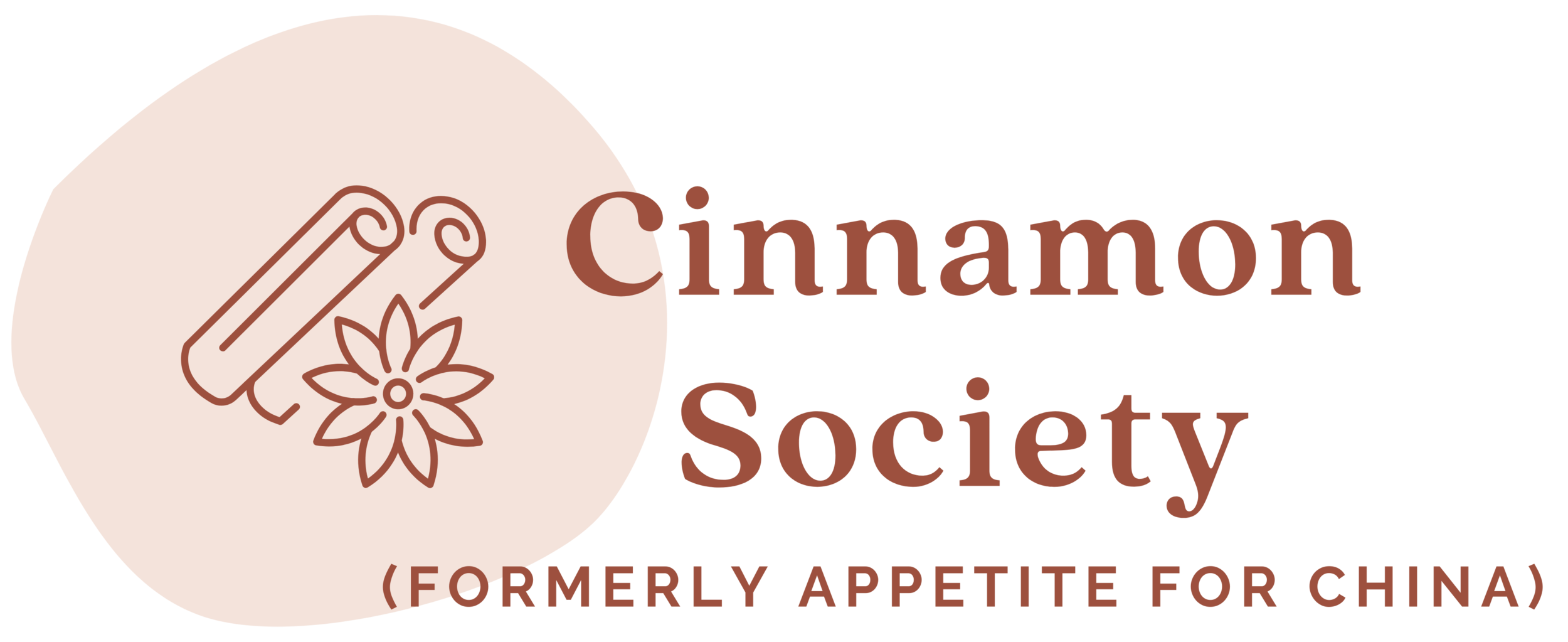Recently, while visiting Jacob's grandmother in California, I discovered a torn cookbook in her kitchen drawers. "Oh!" she exclaimed. "You found my bible!"
Titled "Country Cookin'", the book was published in the 1970s by the Monterey County Cowbelles, otherwise known as the wives of Monterey's ranchers. Surprisingly, only a tenth of the book is devoted to red-meat-centric dishes. Most of the recipes are charmingly anachronistic, like Dove in Wine Sauce and Hot Russian Tea (with Tang!). But what really caught my attention were the handful of Chinese recipes.
Read MoreEd. - Say you're at your favorite Chinese take-out, feasting on moo goo gai pan and crab rangoon. "I bet they don't really eat this stuff in China," you think, recalling the Discovery Channel special on TV last month. You would be correct. But how did dishes like chow mein and the once ubiquitous chop suey, unrecognizable to anyone in China, become such so well-loved in the US? Author Andrew Coe explores this and other mysteries of the Chinese-American culinary repertoire in his new book Chop Suey: A Cultural History of Chinese Food in the United States, which came out this week. In today's guest post, he gives a glimpse into the past and present life of chow mein.
Somewhere in America right now, noodles are frying. The chef is preparing chow mein, which simply means “fried noodles" in Chinese. But not all fried noodles are alike. In China, the varieties of chow mein are as numerous as the regional cuisines. Some are lightly heated in the wok, while others, particularly in Guangdong province and Hong Kong, are fried in bunches in oil until they’re browned and crispy on the outer edges but still soft in the middle. It was this southern style of chow mein that was carried to the United States by the Chinese immigrants.
Read MoreI came across this Edward Hopper painting today and, for a few minutes, tried to connect the image with the name. The painting is evocative of everything I associate with the 1920s: men in suits, chic flappers, and dim stylish interiors. Yet if you look closely, there is a terracotta teapot on the table. And try to decipher the restaurant placard outside the window. The restaurant and painting are both called "Chop Suey".
Ask Americans what comes to mind when they think of Chinese restaurants. The adjectives you'll most likely get are along the lines of cheap, quick, and dingy with fluorescent lighting. Chinese restaurants are now the culinary equivalent of love motels.
I'm not talking about banquet halls in Chinatowns that cater to the Chinese, which also tend to be lackluster. I'm talking about restaurants for the other 99.5% of America. Whether they know it or not, these greasy take-outs, Panda Expresses, and P.F. Changs serve as cultural ambassadors for Chinese food and culture. And what they represent is cheap food for the masses, not culinary sophistication.
Read MoreAt first glance, anyone who didn't grow up in an Asian culture might scrunch up her nose at herbal jelly. It's black, it's shiny, and it jiggles. But really, herbal jelly, or grass jelly, is like JELL-O, only naturally colored. Whole Foods is losing a big opportunity to market this as the next "it" health food.
Maybe it's the fact that it takes the shape of the tin can it comes from, that may turn people off. If, as a culture, Americans have moved past canned cranberry sauce, we might not be too thrilled with something similarly ridged but not candy-colored. Although grass jelly is made from an herb in the mint family, the taste is pretty neutral. Which is why Asians love it in desserts. In Hong Kong cafés and dessert shops serve grass jelly with mangoes, coconut, and other tropical produce. At bubble tea shops like Saint Alp's you can opt for little grass jelly bits instead of tapioca pearls.
In Hong Kong and southern China, you can find also tortoise jelly in tea shops with big gold or silver pots. Called gwei ling go in Cantonese, the genuine stuff is made from powdered tortoise shell and can get be as expensive as 300 HK dollars (about $38) for a rice bowl's worth. Don't worry, PETA members: imitation tortoise jelly is much more common and usually costs $1 or less. It's made from different herb than grass jelly, but tastes pretty much the same.
Read MoreAre you a huge Chinese food fan? Ready for a challenge?
After taking the now famous Omnivore's 100 quiz, I realized 1) my score's pretty good, and 2) it's because the author ran the gamut of Eastern and Western cuisines, high and low end, like a true omnivore. I decided to create my own 100 list of Chinese foods and drinks that, in keeping with the spirit of this blog, focuses on a broad definition of Chinese food.
I've avoided a few well-known delicacies (like bird's nest and shark's fin) that I personally think are either overrated or too scarce to put on any such list. Some foods here are also present in other Asian countries, but I included them because they're so entrenched in Chinese cuisine. In addition to traditional Chinese dishes and ingredients, there are also some international interpretations of Chinese food and foods in Hong Kong and Macau that have developed in the past hundred or so years. In short, a modern take on Chinese food.
So copy and paste the list, highlight the ones you've tried, and let me know how you score. Which ones do you absolutely love and which ones would you not eat even on a dare?
Read More